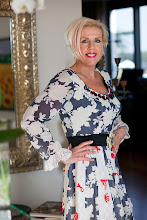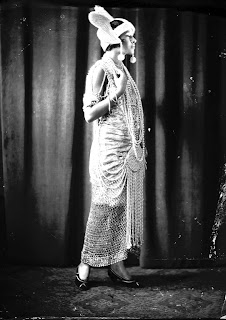I recently met a lady who worked as a theatrical wardrobe professional for many years – amongst other things, she helped to create the costumes for the original Brideshead Revisited series. I asked her for her definition of 'vintage' and this was her reply: “Vintage is such a wonderful word because it describes anything that's not new, but that’s beautiful and that people would want to buy.”
I’m not the world’s greatest expert on antiques (which apparently means over 100 years old, according to some sources), but a lot of people ask me how the price of vintage clothing is determined. To be honest, I’d agree that, to a large extent, it’s all a matter of taste – the value is very much in the eye of the beholder.
I found this useful definition of vintage on the internet:
One of the few exceptions to the age rule is high-end designer gowns. One-of-a-kind designs by designers ... can be considered vintage after two or three years. In fashion, vintage denotes an exceptional example of period clothing, or clothing which still has some commercial appeal despite its age. Having a designer gown declared vintage is an honour for high-end fashion designers.
In most cases, vintage clothing is not less expensive to own than contemporary fashions. A pair of hip-hugging jeans from the early 1970s in good condition may cost twice as much as a brand-new pair of Levi's. Vintage clothing stores should not be confused with thrift stores. Selections at discriminating vintage stores are generally in excellent condition and carefully restored. Great care is taken to make sure the items are originals, not cheaper reproductions sold in general clothing stores. This is especially important when it comes to highly-collectable clothing."
All very interesting. So, if we were to apply a similar approach in terms of age to works of art, then I suppose modern pieces by Damien Hirst or Banksy would be the equivalent of recently made high end designer gowns?
There is certainly sense in:
1) investing in something that you really adore and don’t mind keeping hold of (better still if you can use, wear or even just appreciate it every so often) and
2) buying something that you believe has timeless style/artistic value/quality of craftsmanship, that might grow in value and be a good investment if you ever do wish to sell. The whole idea that an item of clothing bought after the mid- '80s (or even last year) is worthless and fit only for a charity shop is, frankly, rather silly. Your clothes and what you do with them are simply a matter of your own personal taste and individual choice - and, of course, the value ascribed to them by you is probably different to what someone else is willing to, or can afford to pay - that's a matter of their taste, choice and spending power. The vintage clothing market is the place where people agree on a mutually acceptable price, according to subjective factors such as taste, style and uniqueness.
The whole idea that an item of clothing bought after the mid- '80s (or even last year) is worthless and fit only for a charity shop is, frankly, rather silly. Your clothes and what you do with them are simply a matter of your own personal taste and individual choice - and, of course, the value ascribed to them by you is probably different to what someone else is willing to, or can afford to pay - that's a matter of their taste, choice and spending power. The vintage clothing market is the place where people agree on a mutually acceptable price, according to subjective factors such as taste, style and uniqueness.
At ShopCurious, we’ve an extraordinary original, one-off made to order, knitted wool long dress by Julien Macdonald, that was featured in the Sunday Times Style Magazine on 19th September, 1999. You’ll find things for around £10 on our website, if that’s what you’re looking for, but we’re asking a cool £1,000 for this dress because it’s totally unique, (there’s not another in existence) and it’s a piece of vintage genius - a veritable work of art. What’s more, if you don’t snap this up, we’ll just hang on to it until someone else does.
If you’re ShopCurious, you might be inclined to buy it now as an investment for the future...
Are you?
dropshipper
3 years ago








2 comments:
Well written piece. There is indeed a large discrepancy in prices between vintage stores - but vintage is unique and there is now a supply & demand factor which is driving prices up. It is becoming more difficult to find excellent vintage pieces as the style has become so popular! And that is a stunning knitted dress!
We completely agree! Vintage isn't just what's retro...There is an art to the design and craftsmanship! In some cases, the quality of the piece is so unique, one might never come across it again in today's marketplace. LOVE the knitted dress too... amazing!
Thanks!
www.millcrestvintage.com
Post a Comment